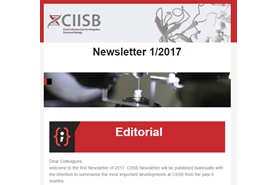22 Mar 2023
Convolutional networks for supervised mining of molecular patterns within cellular context (Nature Methods)
Cryo-electron tomograms capture a wealth of structural information on the molecular constituents of cells and tissues. We present DeePiCt (deep picker in context), an open-source deep-learning framework for supervised segmentation and macromolecular complex localization in cryo-electron tomography. To train and benchmark DeePiCt on experimental data, we comprehensively annotated 20 tomograms of Schizosaccharomyces pombe for ribosomes, fatty acid synthases, membranes, nuclear pore complexes, organelles, and cytosol. By comparing DeePiCt to state-of-the-art approaches on this dataset, we show its unique ability to identify low-abundance and low-density complexes. We use DeePiCt to study compositionally distinct subpopulations of cellular ribosomes, with emphasis on their contextual association with mitochondria and the endoplasmic reticulum. Finally, applying pre-trained networks to a HeLa cell tomogram demonstrates that DeePiCt achieves high-quality predictions in unseen datasets from different biological species in a matter of minutes. The comprehensively annotated experimental data and pre-trained networks are provided for immediate use by the community.
